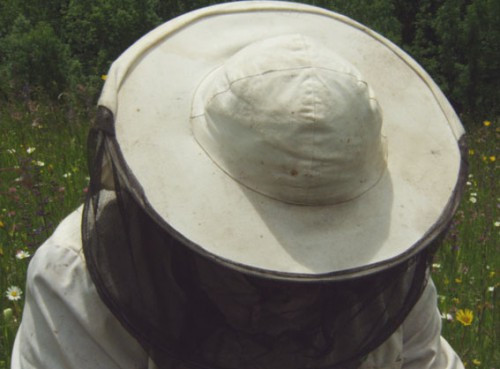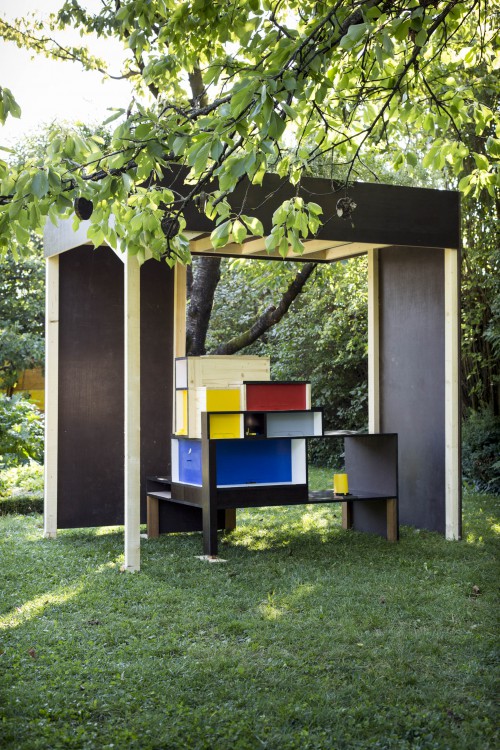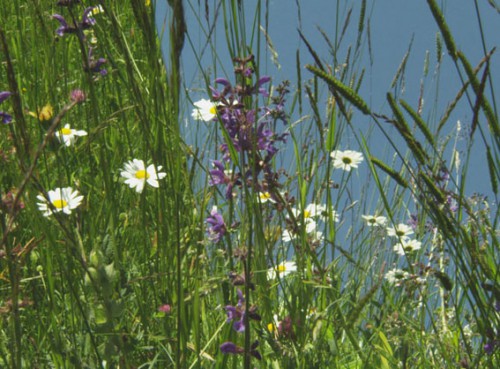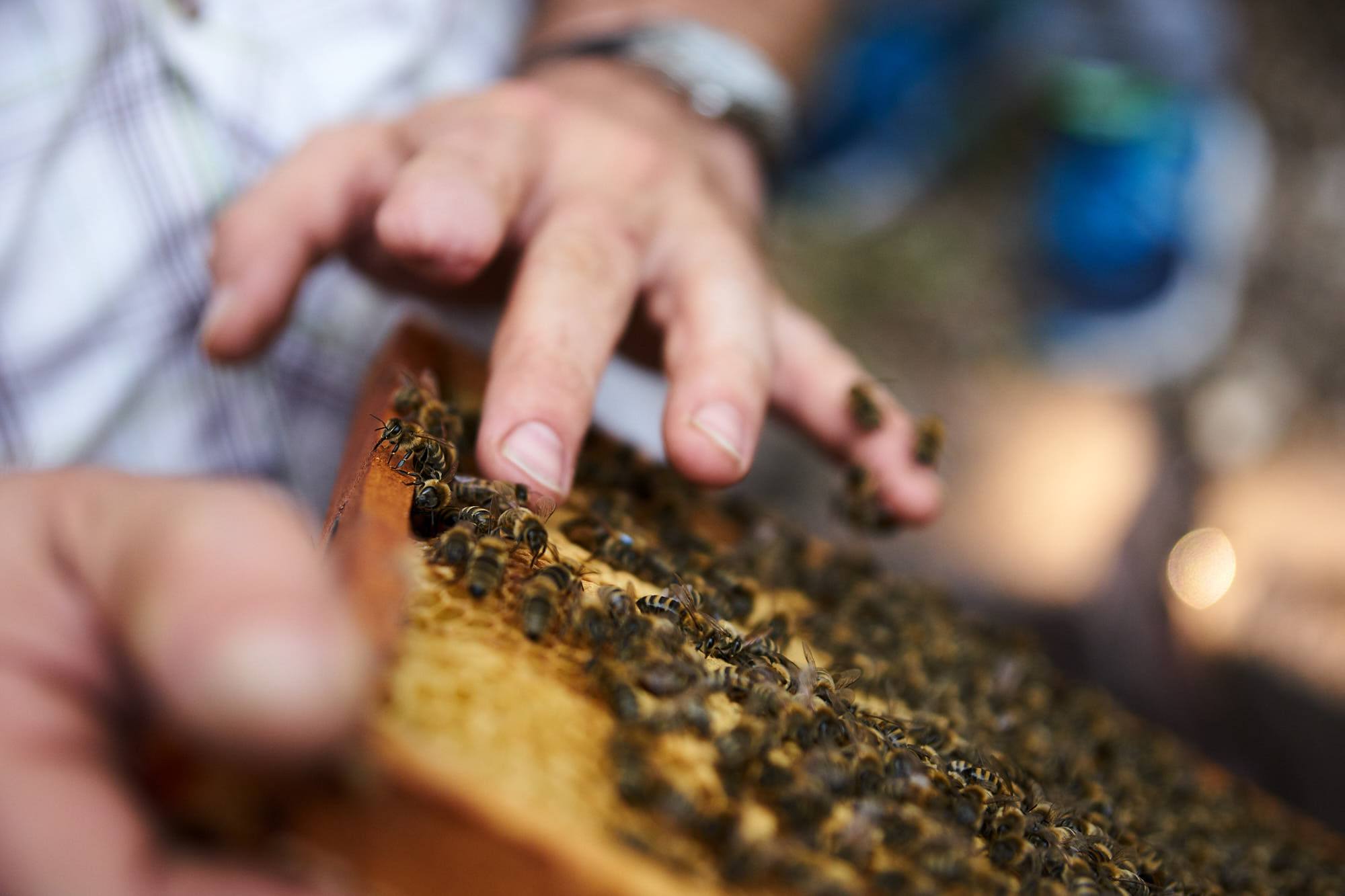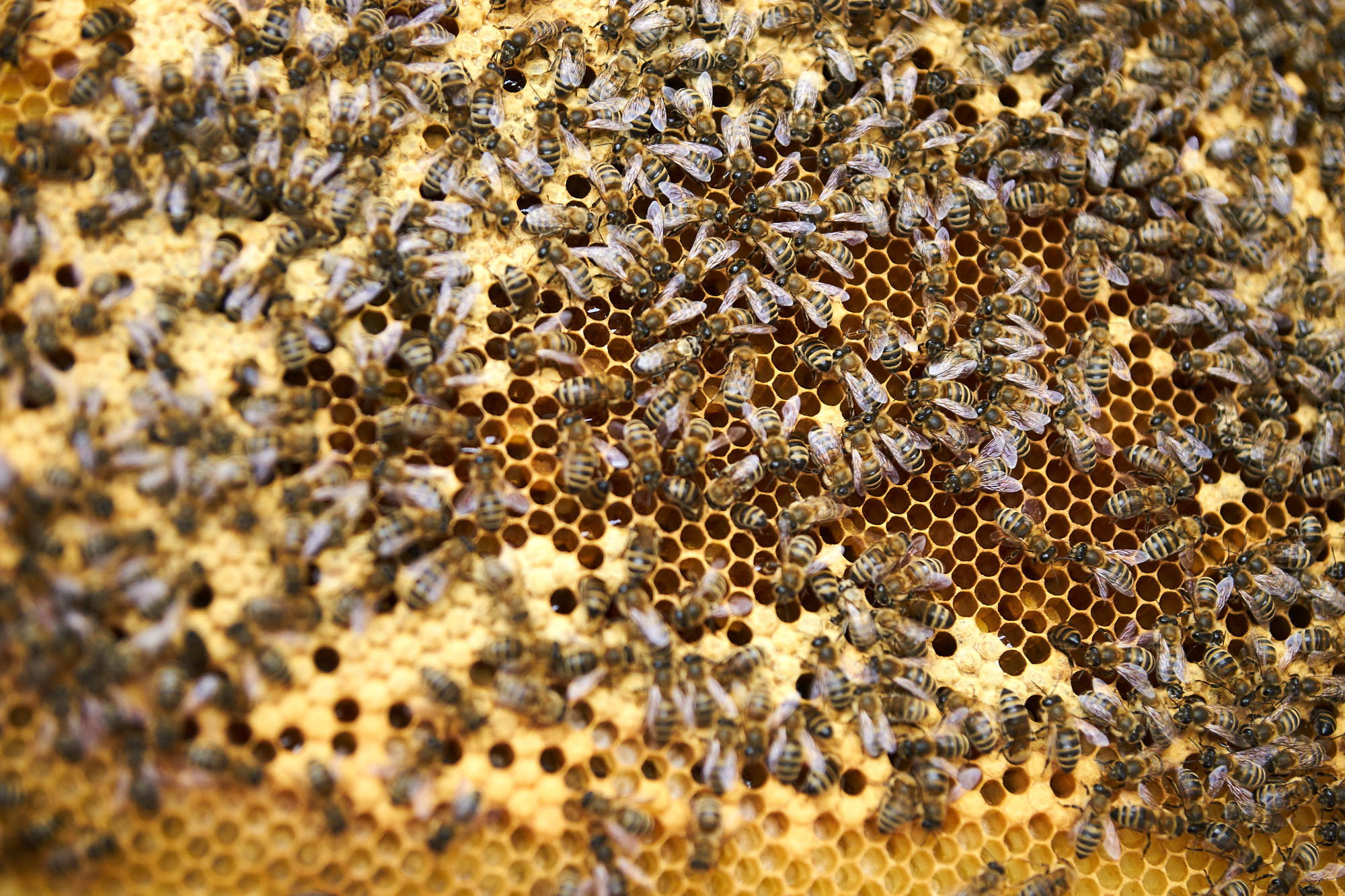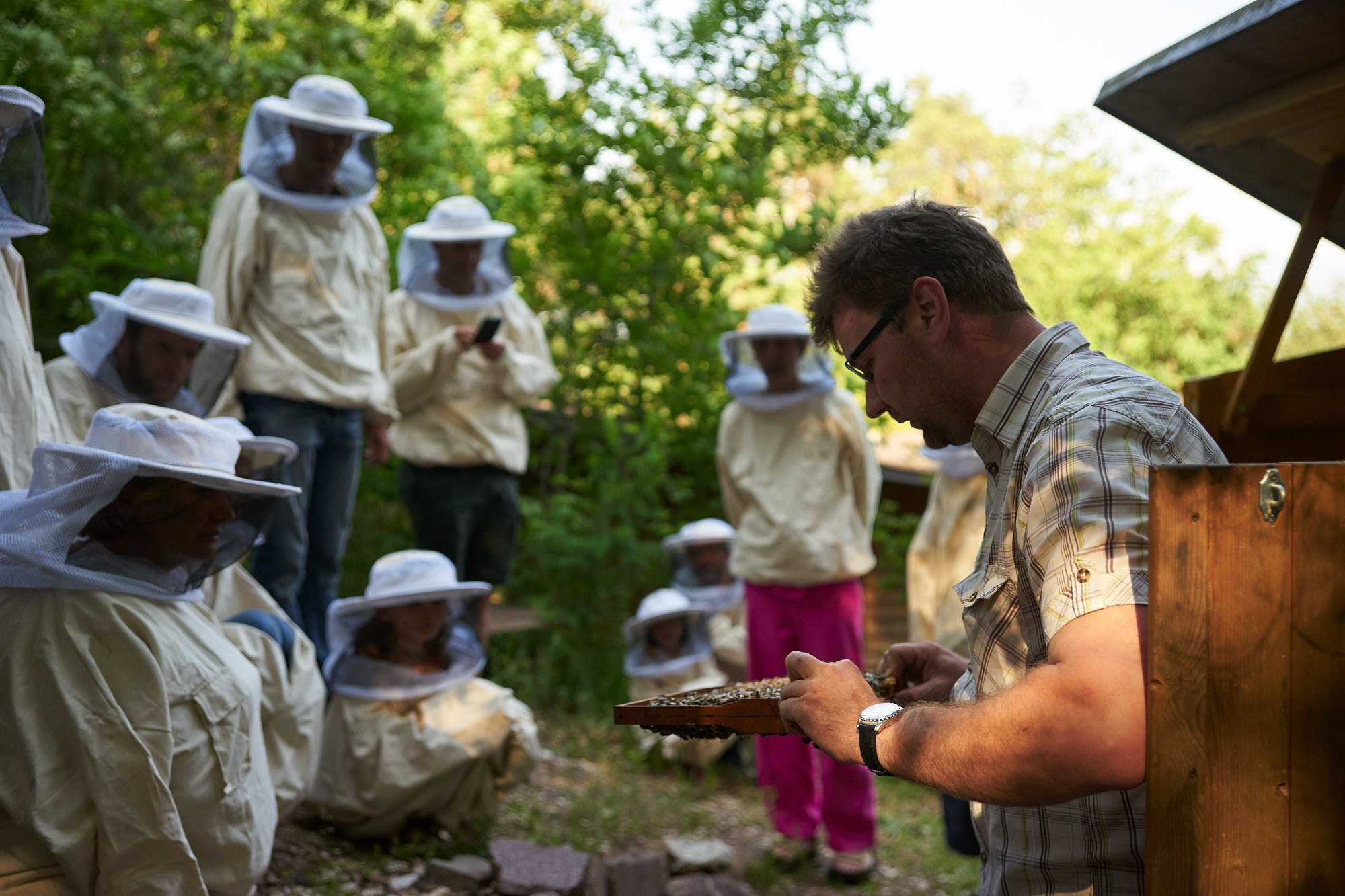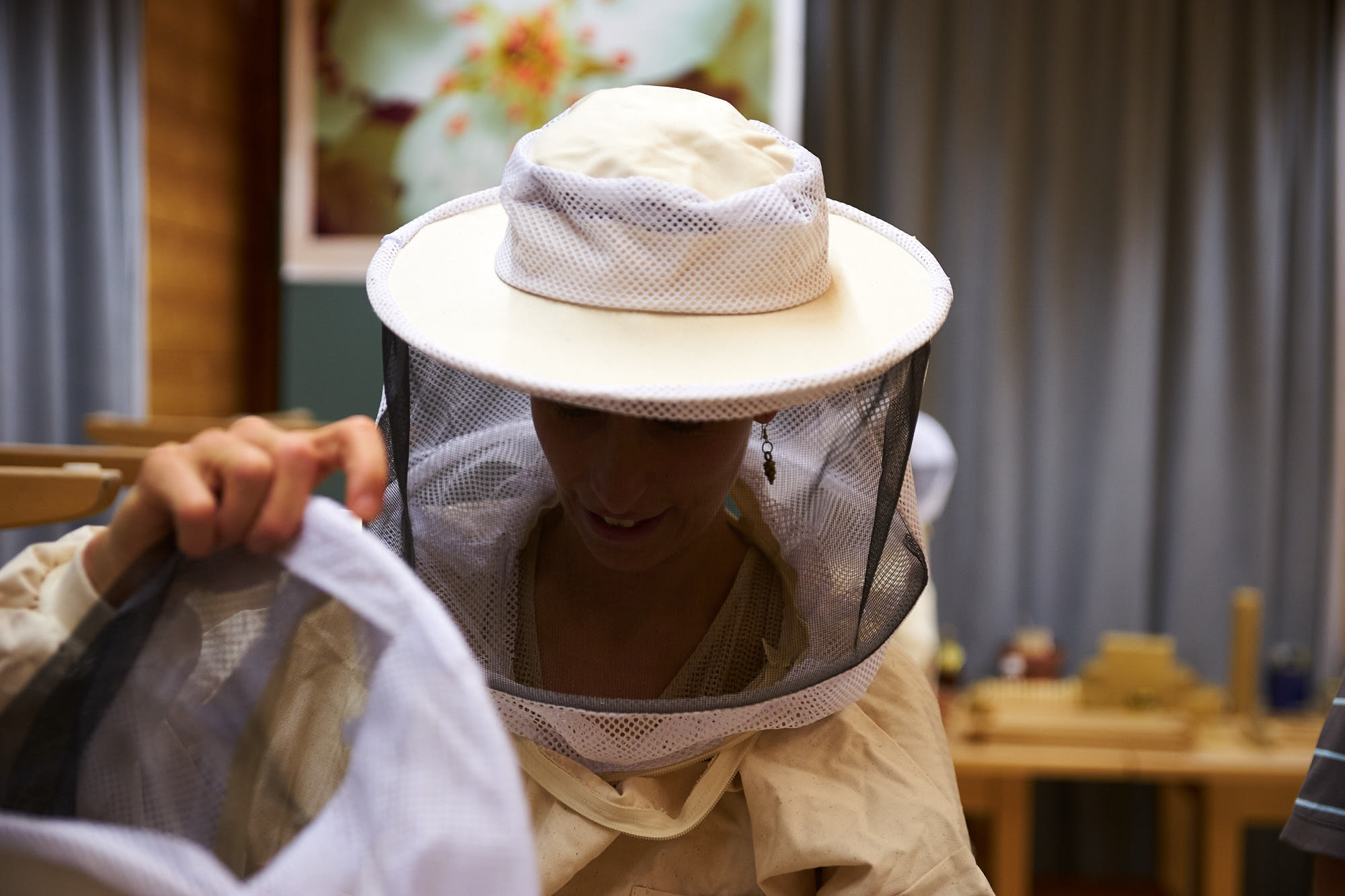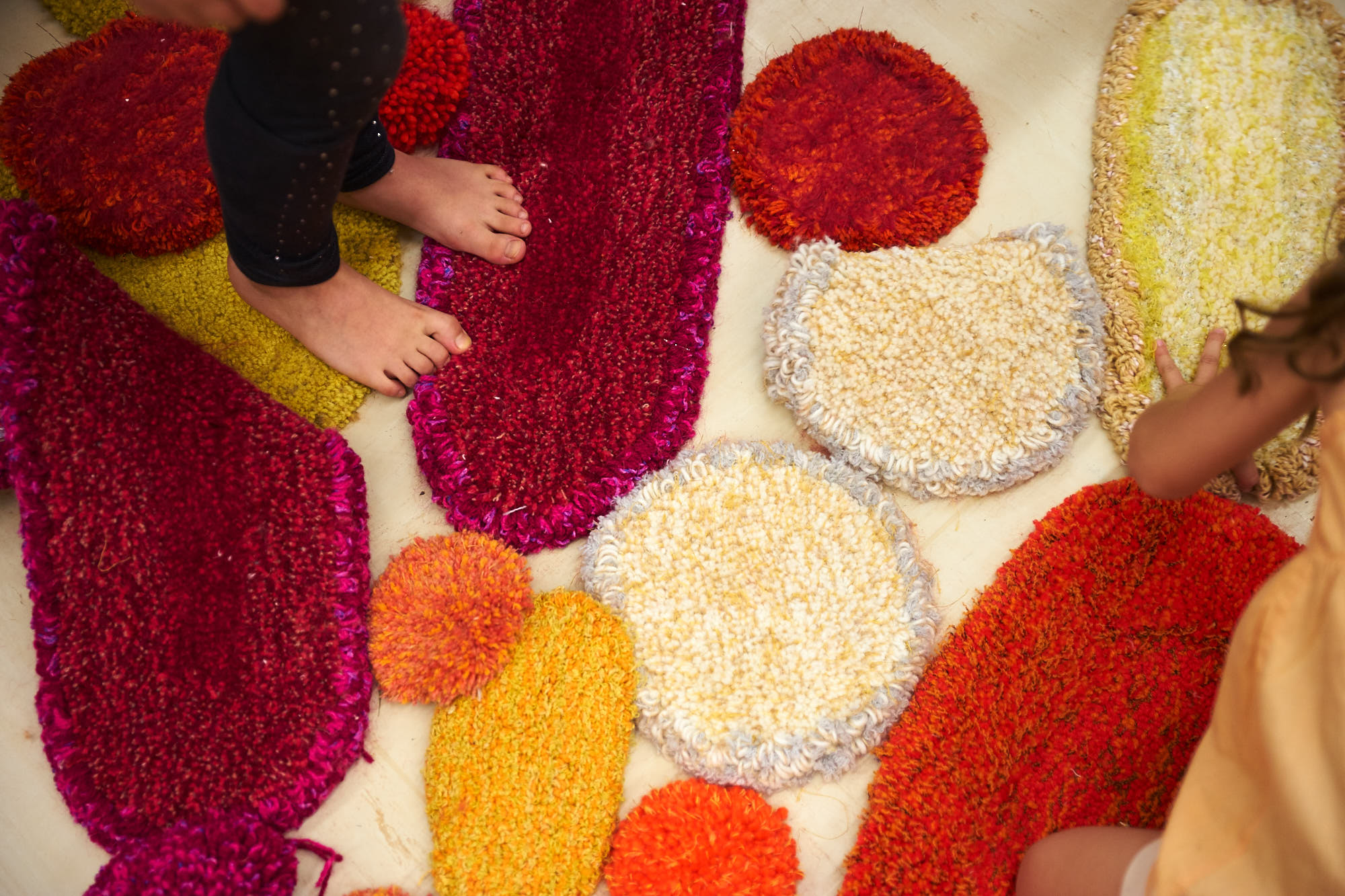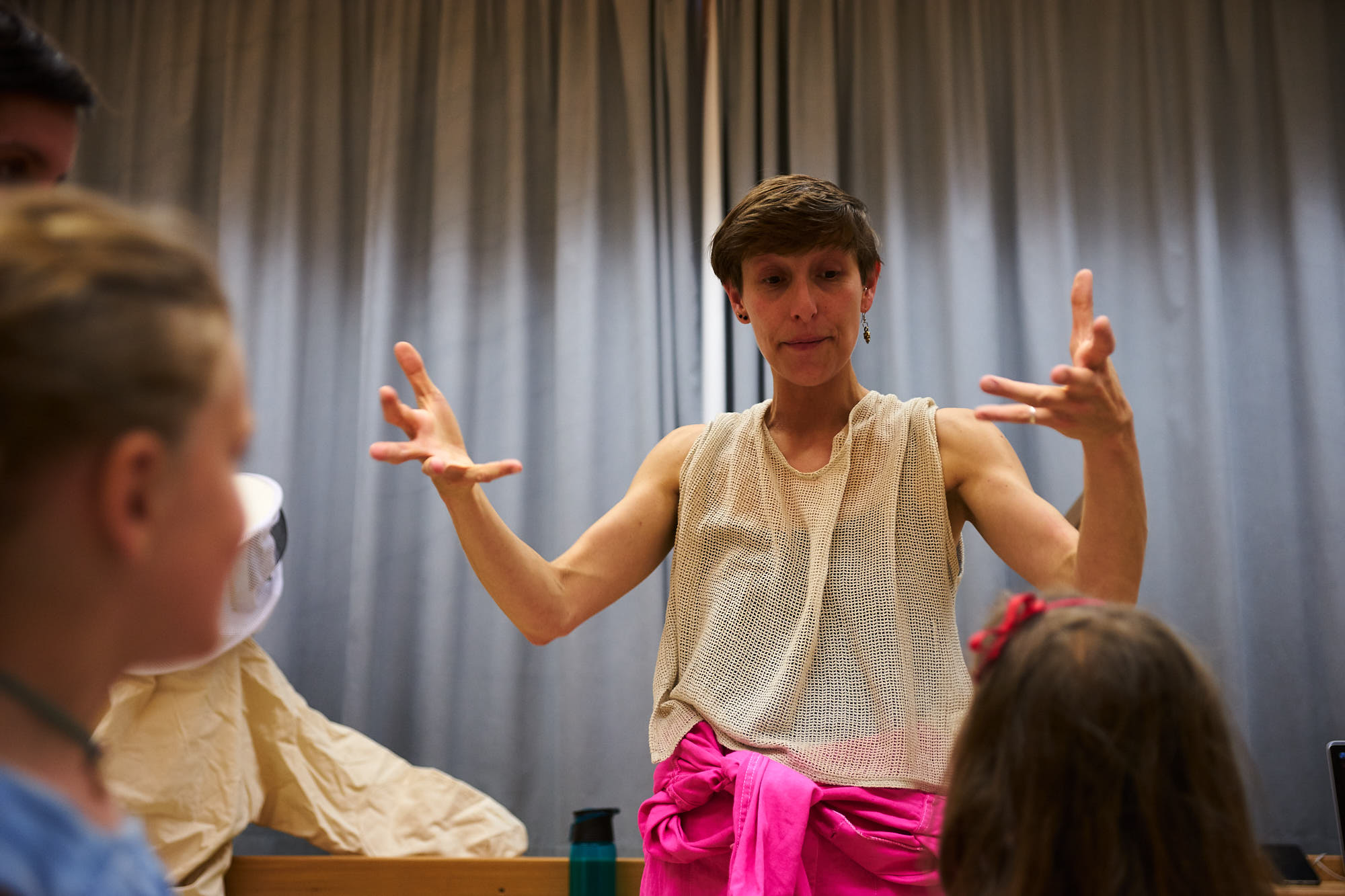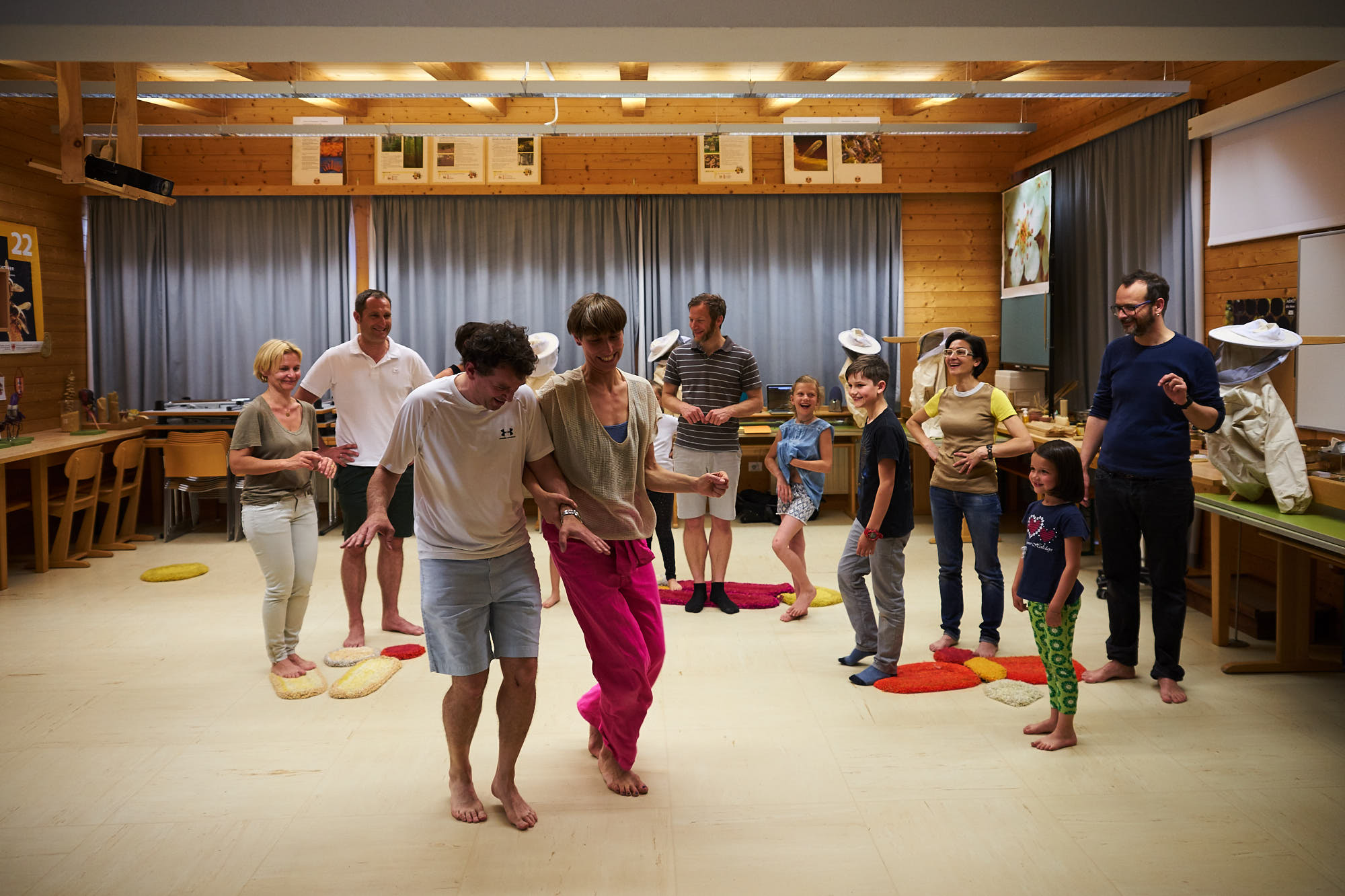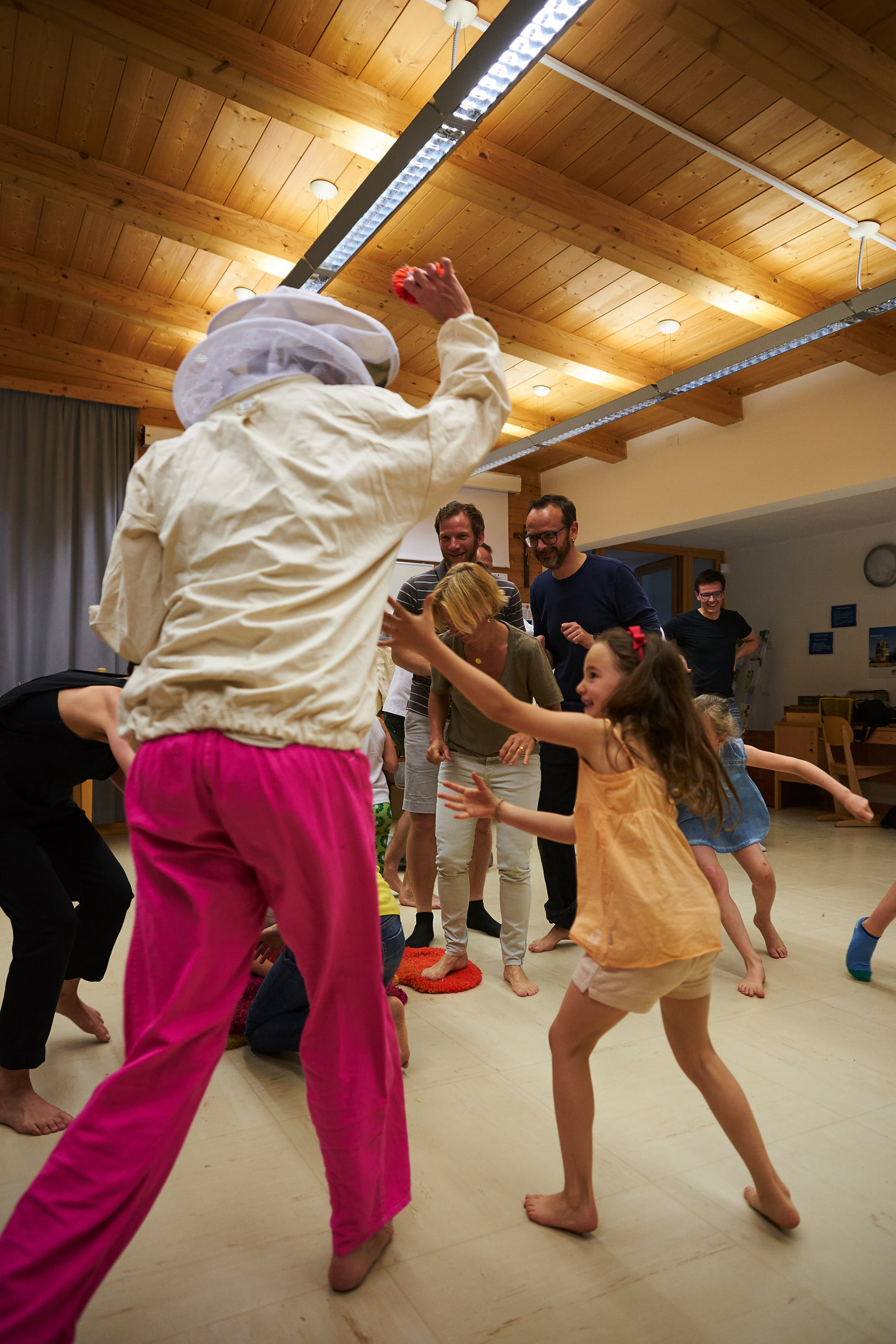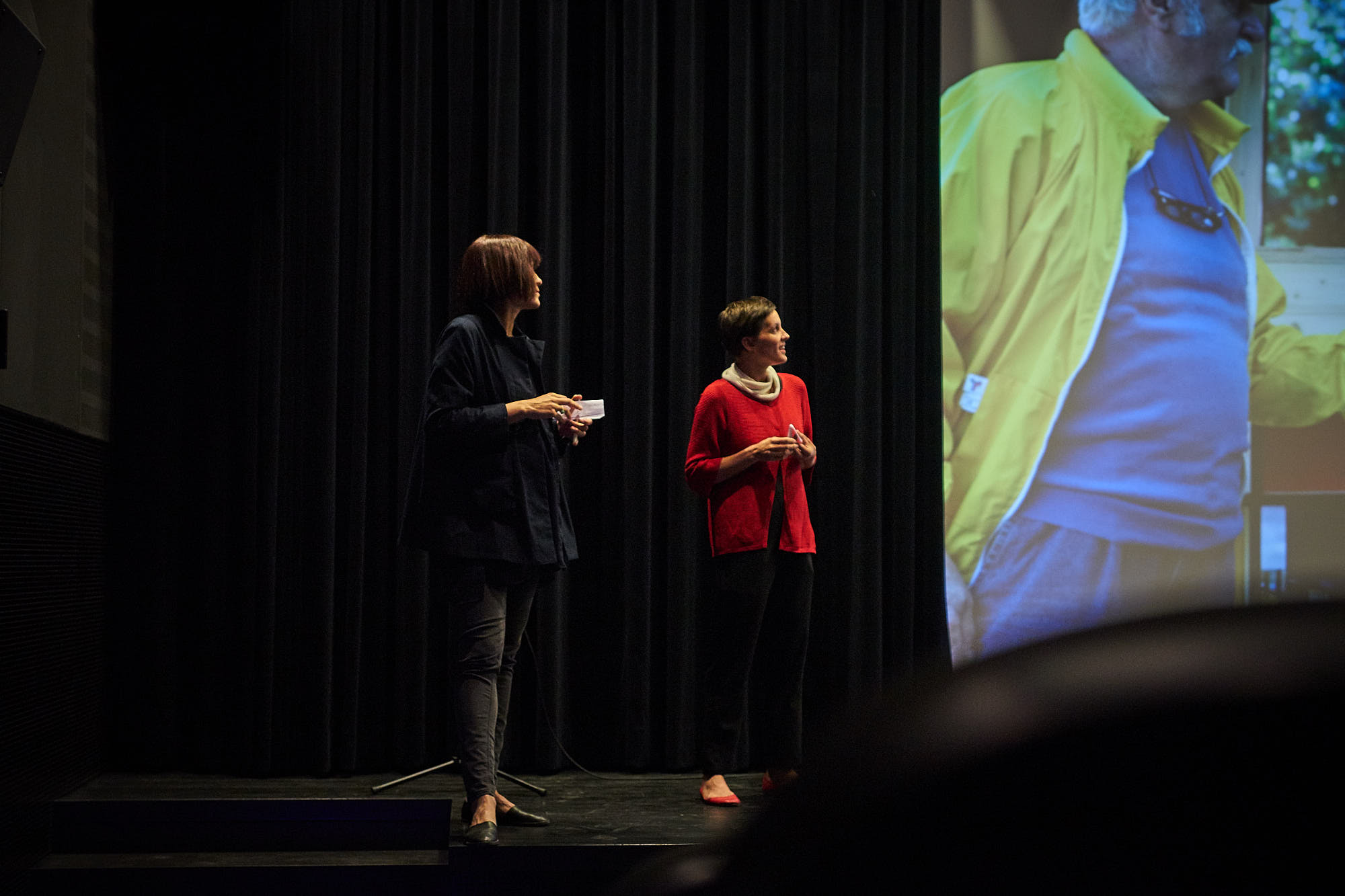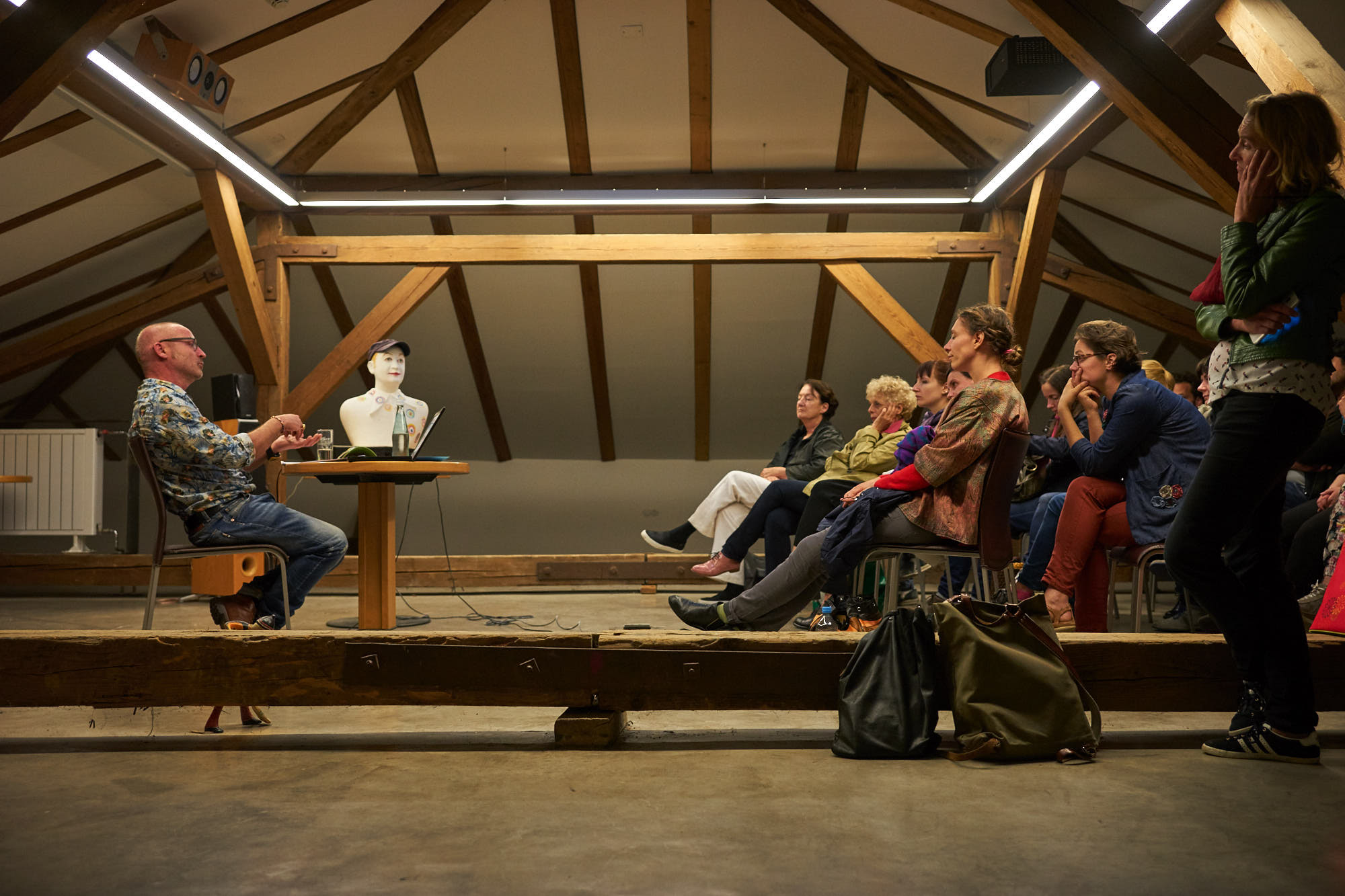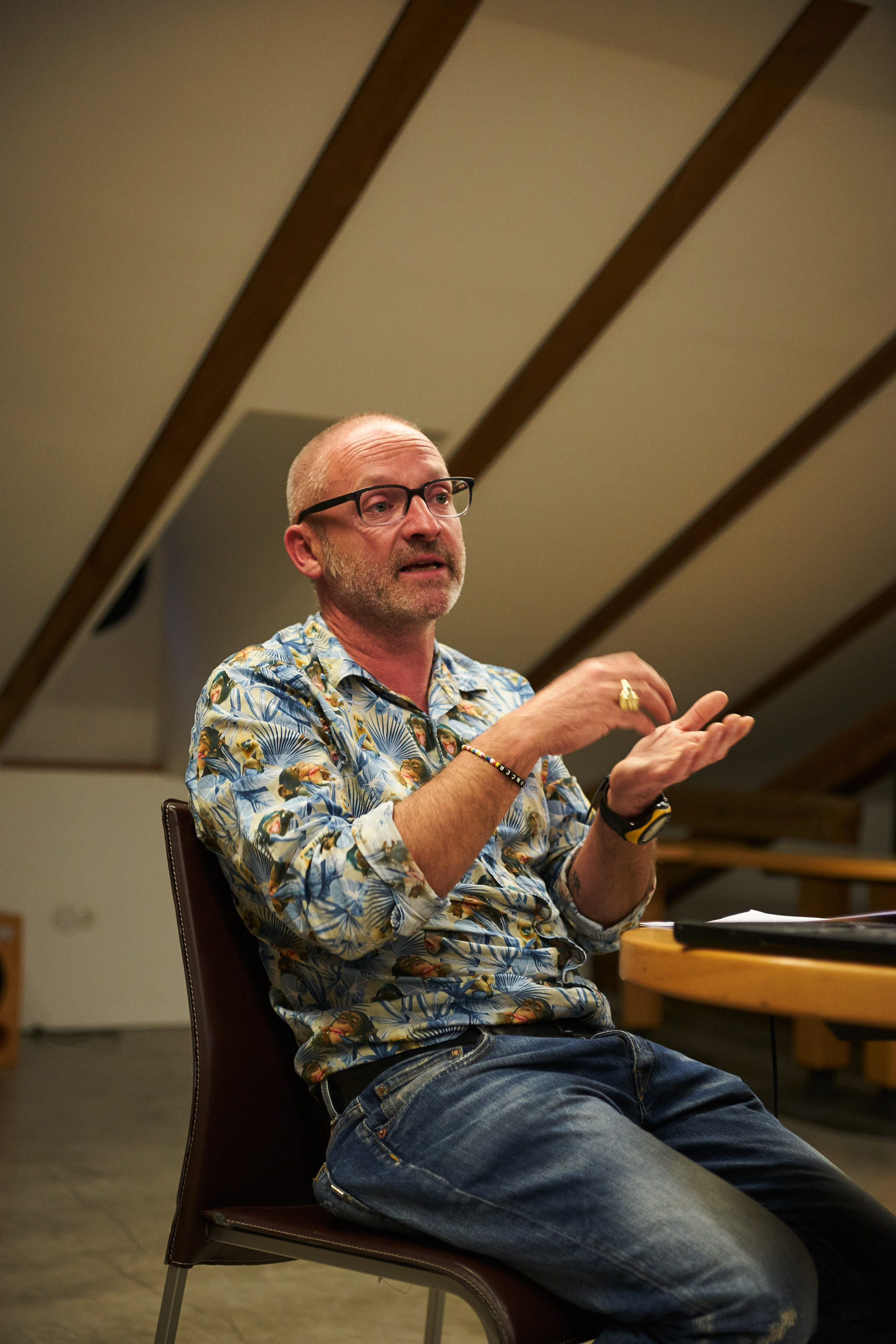28. + 31. Mai 2016
mit Barbara Gamper, Marine Hugonnier, Josef Rainer
Ende Mai 2016 feiert BAU den Einzug der Bienen in das Bauhaus Beehive, realisiert vom Künstler Tamás Kaszás, während seiner Residenz mit BAU im September 2015. Permanenter Standort des Kunstwerkes ist die Bildungsstätte für Bienenkunde in Altenburg bei Kaltern, Südtirol. BAU zelebriert diesen Moment an zwei Tagen mit weiteren Kunstprojekten, die sich mit der Beziehung zwischen dem Tier und dem Menschen befassen. In der Bildungsstätte für Bienenkunde in Altenburg lädt die Künstlerin Barbara Gamper Kinder zu einem Bienentanz-Performance Workshop, Rock Star Bees ein (28. Mai). Im Filmtreff Kaltern wird der außergewöhnlich poetische Film Apicula Enigma von Marine Hugonnier gezeigt (31. Mai). Im Film werden Parallelen zwischen der Aktivitäten der Bienen im Stock und den Arbeitsprozessen der Künstlerin hinter der Kamera sichtbar. Im Anschluss reflektiert Josef Rainer in einem fiktiven Gespräch über das Verhältnis seiner künstlerischen Arbeit und der Imkerei (31. Mai).
Samstag, 28.Mai 2016
15.00 – 18.00 Uhr
Ort: Bildungsstätte für Bienenkunde in Altenburg, Kaltern
BARBARA GAMPER, Performance Workshop Rock Star Bees für kids 6+
Der Workshop Rock Star Bees lädt Kinder ab 6 Jahren ein den Tanz der Biene zwischen Sonne, Nektar und Bienenstock auf spielerische Weise zu erkunden. Gemeinsam mit der Künstlerin Barbara Gamper schlüpfen die Kinder durch Rollenspiele und Bewegungsübungen in den Körper eines Bienenvolkes, einer Bienenkönigin oder einer Arbeiterdrohne. Ein Nachmittag mit viel Bewegung, Bienensummen und einer abschließenden Performance der Bienen-Kinder.
Anmeldung: info@b-a-u.it/Tel. +39 335 676 5553
Dienstag, 31.Mai 2016
19:30 Uhr
Ort: Filmtreff Kaltern
MARINE HUGONNIER, Apicula Enigma, 35mm film übertragen auf Blue Ray, 26’, 2013
Der poetische Film Apicula Enigma (das Rätsel der Biene) spielt in den Koschuta Bergen im Süden Kärntens, wo die Honigbiene Carnica heimisch ist. Mit künstlerischen Methoden erkundet Hugonnier das Reich eines Bienenvolkes in der Wildnis und im Bienenstock. Gleichzeitig legt der Film die filmische Arbeit offen und dokumentiert die Aktivität der Künstlerin: das Platzieren technischer Utensilien, das Aufnehmen von Ton, das Ausmessen von Distanzen. Dadurch wird der Film zu einem zweiseitigen Apparatus, welcher es einerseits erlaubt über die Möglichkeiten einer rein anthropomorphen Narrative des Insektes hinaus zu gehen und gleichzeitig die Komplexität des künstlerischen Eingriffes – technische Hilfsmittel, Schnittauswahl der Künstlerin – offenlegt.
JOSEF RAINER, Wenn Skulpturen und Tiere mitreden…, Künstlergespräch
In einem fiktiven Gespräch zwischen dem Künstler, Skulpturen und Tieren wird Josef Rainer über seine Auseinandersetzung mit Tieren und im speziellen der Biene in seiner künstlerischen Arbeit sprechen. Wie beinflussen sich künstlerisches Schaffen und die Imkerei? Was hat ein Bienenvolk mit dem menschlichen Gehirn zu tun?
Ausgehend von historischen Fakten, Kunstwerken aus der Antike, kuriosen Anekdoten oder auch gefunden Schulheften entwirft Rainer Skulpturen, Installationen und Geschichten, die eine obsolete Realitätswahrnehmung in Frage stellen. Tiere wie Ameisen, Papageien, Orang Utans, Minotaurus, Bienen erscheinen in Rainers Arbeiten, mal als ‚skulpturale Automaten’, aber auch in lebendiger Form, wobei sie das Werk essentiell verändern.
Projektpartner: Bildungsstätte für Bienenkunde in Altenburg der Fachschule für Obst-, Wein- und Gartenbau Laimburg und Filmtreff Kaltern.
Mit der Unterstützung von: Deutsche Kulturabteilung der Autonomen Provinz Bozen
28 + 31 May 2016
with Barbara Gamper, Marine Hugonnier, Josef Rainer
During the end of May, BAU celebrates the introduction of a new colony of bees in the Bauhaus Beehive—conceived by artist Tamás Kaszás during his residency with BAU—which has found its permanent location at the Bee Research Centre in Castelvecchio close to Caldaro, South Tyrol. The configuration of this experimental beehive is inspired by the architecture of the Bauhaus, adopting its interest in adaptability to the human body onto the benefit of animal life and of this specific bee colony. BAU will celebrate this moment with two days of art projects which deal with the relationship between the animal and the human. Rock Star Bees (28 May) consists of a performance workshop led by Barbara Gamper and held at the Bee Education Centre in Castelvecchio for children who will be invited to a bee dance. Marine Hugonnier’s poetic and observational film Apicula Enigma (2013) will be screened at the Filmtreff Caldaro. The film explores the parallels between the activities of the bees in the hive and in a wild colony, and the work processes of the artist behind the camera (31 May). After the screening we’ll host a talk with artist Josef Rainer, reflecting on the relationship and communalities between his artistic work and bee keeping (31 May).
Saturday, 28 May 2016
3 – 6pm
Location: Bee Education Center Altenburg/
Castelvecchio, Caldaro
BARBARA GAMPER, Performance Workshop Rock Star Bees for kids 6+
The workshop Rock Star Bees invites children aged years and older to explore the dance of the bee between sun, nectar and bee hive in a playful way. Together with the artist Barbara Gamper, children are invited to engage in role plays and exercises that reflect the body of a bee colony, a queen bee or a worker drone. This will be an afternoon full of movement, bees buzzing and a final performance of the bee kids.
Tuesday, 31 Mai 2016
7:30pm
Location: Filmtreff Kaltern
MARINE HUGONNIER, Apicula Enigma, 35mm film transfered to Blue Ray, 26’, 2013
A rigorous and poetic filmic exercise, Apicula Enigma [The Bee’s Riddle] was shot in the Austrian Koschuta mountains of southern Carinthia, which host the endemic Carinthia honey bee. Presenting artistic methodology as a form of exploration of the place of the animal outside anthropomorphising narratives, the film is entirely set around the dwellings of a colony of bees, and documents the activity of a beehive while displaying the filming procedures and the artist at work, installing utensils, taking measures, recording sound. In doing so, it becomes a two-sided apparatus that induces the reflection about the possible attempts to go beyond the symbolic and instrumental reading of the insect, at the same time as it acknowledges the inevitable mediation between the artist’s gaze, the technological devices that support it, and her own choices of editing and display.
JOSEF RAINER, Wenn Skulpturen und Tiere mitreden…, artist talk
In a fictional conversation between the artist, sculptures and animals Josef Rainer will talk about his the role of the animals and in particular the bee in his artistic work. How can artistic work and beekeeping influence each other? What does a bee colony to do with the human brain?
Starting from historical facts, art works from the antiquity, curious anecdotes or found school books Rainer creates sculptures, installations and stories that put into question obsolete perception of reality. Animals such as ants, parrots, orang-utans, minotaurs, bees appear in the artist’s work, sometimes as a sculptural machines’, but also in living form, where they interact substantially with the artwork.
Project partner: Bee Education Center in Castelvecchio (Caldaro) of the Agricultural school Laimburg and Filmtreff Kaltern, Caldaro.
With the support of: Cultural department of the Autonomous Province of Bolzano
28 + 31 maggio 2016
con Barbara Gamper, Marine Hugonnier, Josef Rainer
Quest’anno, nel mese di maggio, BAU festeggia l’ingresso della nuova colonia di api nel Bauhaus Beehive, l’alveare concepito dall’artista Tamás Kaszás durante la sua residenza presso BAU, che ha il suo luogo permanente alla Scuola d’apicoltura a Castelvecchio (Caldaro). Un alveare sperimentale, inspirato all’architettura della Bauhaus e adottando il suo interesse per il corpo umano al beneficio della vita animale e specificamente pensata per ospitare la convivenza di una colonia di api. Nell’arco di due giornate del mese di maggio, BAU celebra altri progetti artistici che si interrogano sul rapporto tra umani e animali. Sempre alla Scuola d’apicoltura a Castelvecchio, Barbara Gamper presenta Rock Star Bees, un performance workshop per bambini destinato ad esplorare attraverso il movimento la danza che le api compiono tra il sole, il nettare, e l’alveare (28 maggio). Al Filmtreff di Caldaro presenteremmo il film Apicula Enigma (2013) di Marine Hugonnier dove vengono osservate in modo poetico e attento le corrispondenze che intercorrono tra l’attività delle api in un alveare e in una colonia selvatica e quella dell’artista all’opera dietro la macchina da presa (31 maggio). Dopo lo screening ci sarà una conversazione con l’artista Josef sul rapporto tra il suo lavoro artistico e l’apicoltura (31 maggio).
Sabato, 28 maggio 2016
ore 15.00 – 18.00
Luogo: Apiario provinciale Castelvecchio, Caldaro
BARBARA GAMPER, Performance Workshop Rock Star Bees per kids 6+
Il workshop Rock Star Bees invita bambini da i 6 anni ad esplorare la danza delle api, muovendosi in modo giocoso tra sole, nettare ed alveare. Insieme all’artista Barbara Gamper ed attraverso danze e giochi di ruolo, il gruppo dei bambini si trasforma in una colonia di api, un’ape regina oppure in un drone operaio. Il pomeriggio – durante il quale i bambini hanno la possibilità di muoversi ed esplorare il mondo delle api – si concluderà con una performance collettiva.
Martedì 31 maggio 2016
ore 19:30
Luogo: Filmtreff Caldaro
MARINE HUGONNIER, Apicula Enigma, 35mm film trasferito su Blue Ray, 26’, 2013
Un esercizio filmico rigoroso e poetico, Apicula Enigma [L’enigma delle Api] è stato girato tra le montagne austriache Koschuta, nel sud della Carinzia, che ospitano la specie endemica di ape Carinzia. Presentando la metodologia artistica come una forma di esplorazione del luogo dell’animale oltre alle narrative antropomorfiche, il film è ambientato interamente attorno allo spazio dove abita una colonia di api e documenta l’attività di un alveare allo stesso tempo che documenta le procedure di ripresa e l’artista al lavoro: l’installazione di utensili, l’adozione di misure, registrazione del suono. Il film diventa un apparato che induce la riflessione sui tentativi di andare oltre alla lettura simbolica e strumentale dell’insetto, allo stesso tempo che riconosce la mediazione inevitabile fra lo sguardo dell’artista, i dispositivi tecnologici che lo sostengono e le scelte di editing e visualizzazione.
JOSEF RAINER, Wenn Skulpturen und Tiere mitreden…, conversazione con l’artista
Josef Rainer ci racconta l’importanza della relazione con il regno animale, in modo particolare con le api, nel suo lavoro artistico, attraverso una conversazione immaginaria tra un artista, delle sculture e degli animali. Come si influenzano vicendevolmente l’apicoltura e il fare artistico? Cosa hanno in comune un popolo di api e un cervello umano?
L’artista Josef Rainer sviluppa sculture, installazioni e narrazioni in grado di mettere in discussione la percezione obsoleta della realtà a partire dal ritrovamento di antichi artefatti, notizie, aneddoti e quaderni scolastici. Animali come pappagalli, oranghi, minotauri, api e formiche appaiono nel lavori di Rainer sia come „macchine scultoree“ che come forme viventi, trasformando l’opera in modo essenziale.
Partner: Apiario provinciale a Castelvecchio (Caldaro) della Scuola professionale per la frutti-, viti-, orti- e floricoltura Laimburg e Filmtreff Kaltern, Caldaro.
Con il sostegno di: Ripartizione di cultura tedesca della Provincia autonoma di Bolzano



